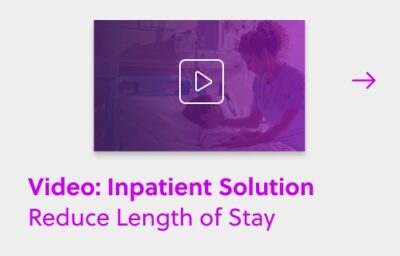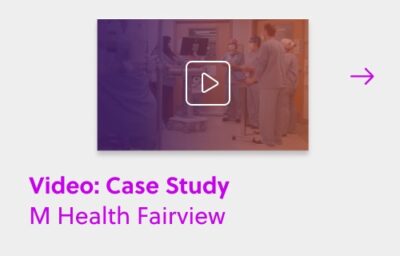
In inpatient flow management, tracking and understanding the length of stay for a patient is a way to measure the health system or hospital’s quality improvement initiatives. Within value-based care, where a patient’s outcome is put ahead of services rendered, length of stay, and how it compares to averages in peer hospitals, is a key metric for financial planning and patient flow optimization. Let’s dive into how each one of these is calculated and its overall impact on the industry.
Length of Stay
Length of stay is calculated by four different variables – average length of stay (ALOS), observed over expected length of stay, case adjusted length of stay (CMA-LOS), and the topic here of geometric mean length of stay. (GMLOS)
What is GMLOS & Why is it Important?
GMLOS is a system of grouping together clinically similar patients into a diagnosis-related group (DRG). For example, sepsis is a DRG that has a median length of stay of 5 days, within the group of the Armed Forces.
By leveraging GMLOS, hospitals and health systems can compare against peer groups to understand:
- Operational Efficiencies: Providing an accurate measure and prediction of patient stays can help with staffing, resource allocation, bed management and more.
- Patient Care: Enhancing length of stay predictions or reducing the length of stay lends itself to improved patient care.
- Financial Impact: GMLOS is often used for reimbursement models and impacting cost of care. Hospitals with lower GMLOS ratings are often seen as more efficient, and when coupled with patient feedback, can lead to better reimbursements from insurance and government programs.
How is GMLOS Calculated?
Geometric Mean Length of Stay is calculated by taking the lengths of stay for patients within a DRG and multiplying them together, then the geometric mean is determined by taking the nth root of the result, where n is the number of patients within the DRG.
Here’s a small example – Let’s say we’re examining total knee replacements across a small inpatient group for DRG 470 – Major Joint Replacements or Reattachment of Lower Extremity.
- Patient 1: 2.5 days
- Patient 2: 3.2 days
- Patient 3: 3 days
- Patient 4: 5.5 days
- Patient 5:1.5 days
We would multiply all of those numbers together to equal: 2.5×3.2×3×5.5×1.5=198
Next, we take the 5th root (since there are 5 patients) of the product: ≈2.73
Therefore, the Geometric Mean Length of Stay for this group is approximately 2.73 days. Now obviously, this is a very small example, and the data is usually across thousands to hundreds of thousands of patients depending on the DRG in order to adjust for outliers.
Factors and Challenges Impacting GMLOS:
Obviously, every person and every health care system are different. There are plenty of factors and challenges that impact higher and lower length of stays. Some of those include:
- Patient Demographics: Age, gender and overall health of the patient population can influence GMLOS. For example, GMLOS in Sumter County, Florida, where the median age is 65 (compared to the state-wide median age of 42.7) for a specific DRG may be higher due to age-related frailty.
- Regulatory Requirements: Compliance with certain regulations may influence GMLOS.
- Seasonal Variations: Flu season, patient volumes, and peak seasons can affect length of stay as patient load increases.
- Care Coordination: Increasing efficiency in Multi-disciplinary rounds (MDRs) is key to minimizing delays in patient flows and discharge processes.
- Data and Predictions: Health systems that don’t have data processes or availability of prediction tools can have difficulty in optimizing towards improved length of stay.
- Discharge Planning: Practices without effective discharge planning procedures may have higher LOS values, whereas hospitals with effective discharge planning will have lower.
While GMLOS is an important metric to understand performance and aid in discharge planning, it should not be the only metric used in discharge planning. Models that take into account the other factors mentioned above – and more – enable more accurate discharge planning than GMLOS alone.
Optimizing Discharge Planning with Qventus
Qventus provides a comprehensive patient flow software solution that leverages AI and machine learning to streamline discharge planning, reduce LOS, and enhance bed management.
Qventus uses advanced AI and machine learning models to integrate with your EHR, analyzing real-time data to predict discharge dates, patient disposition, and potential barriers to discharge. This predictive capability allows healthcare teams to automate manual steps, reducing cognitive burden and improving the accuracy of discharge planning. By auto-populating confident predictions directly into care plans or making recommendations for team confirmation, Qventus ensures a smooth and efficient discharge process.
Additionally, The Qventus Inpatient Flow Dashboard provides powerful real-time analytics to help healthcare leaders monitor and optimize patient flow, track length of stay, reinforce best practice behaviors, and identify targeted improvement opportunities.
Proven Results
Health systems using Qventus have achieved significant improvements in patient flow and operational efficiency:
- Up to 1-day reduction in length of stay
- 30-50% decrease in excess days
- 80% fewer clicks during multidisciplinary discharge rounds (MDRs)
- 10x+ ROI for partners in 2021
By optimizing discharge planning, hospitals can unlock effective capacity, reduce frontline burden, and enhance patient experiences. Qventus’ inpatient flow software provides a robust solution for achieving these outcomes through advanced AI-driven predictions, automated care coordination, and real-time analytics.


